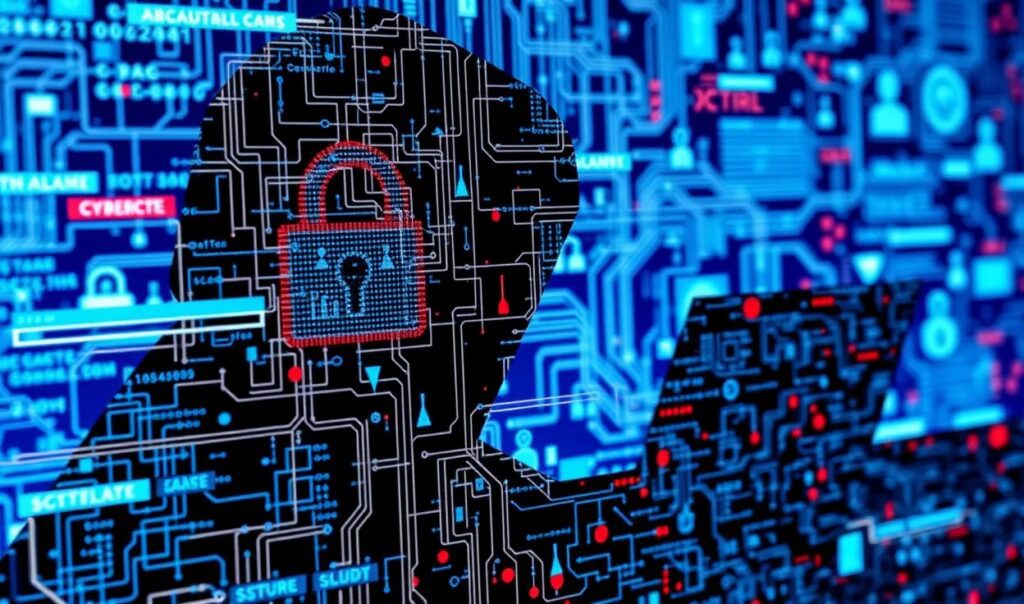
Understanding AI’s Role in Cybersecurity
What Makes AI a Game-Changer in Security?
Artificial Intelligence (AI) has revolutionized cybersecurity by automating tasks, analyzing threats faster, and reducing human error. Its predictive capabilities are especially valuable for anticipating attacks.
Unlike traditional systems, AI adapts. It learns patterns over time, making it a formidable tool against evolving threats. In short, AI bridges the gap where manual oversight falls short.
For instance, machine learning models analyze vast amounts of data in seconds. This reduces detection times for anomalies, which might otherwise take hours—or even days—to uncover.
Key Applications of AI in Cybersecurity
AI is everywhere in security operations. Here are some common applications:
- Threat detection systems powered by AI flag potential risks early.
- AI automates routine tasks like patch management or monitoring logs.
- Sophisticated tools predict future attack patterns based on historical data.
These applications make AI essential for organizations, whether protecting small businesses or global enterprises.
Recognizing AI-Powered Cyber Threats

How Cybercriminals Leverage AI
Unfortunately, hackers use AI, too. This tech isn’t limited to the good guys. Malicious actors deploy AI to bypass security systems and amplify attack success.
For example, AI-powered phishing emails mimic real correspondence, making scams harder to identify. Similarly, AI can craft malware capable of adapting to evade detection tools.
This dual-edge nature of AI emphasizes why it’s crucial to stay vigilant and informed.
Real-Life Examples of AI-Driven Attacks
Cybercriminals have already demonstrated the potential for AI-driven attacks:
- Deepfake scams have been used to impersonate company executives, tricking employees into transferring funds.
- AI-powered bots flood systems with requests, leading to denial-of-service (DDoS) attacks.
- Predictive algorithms enable attackers to guess passwords and crack encryption faster.
Recognizing these threats early requires AI-backed defense strategies, ironically.
Strengthening Defenses with AI
AI-Driven Security Tools
To counter sophisticated threats, organizations deploy advanced AI security solutions. These tools use AI for real-time detection and proactive defense.
Some popular tools include:
- Behavioral analytics: Monitor unusual activity patterns and flag risks.
- Intrusion detection systems (IDS): Identify potential breaches before they occur.
- Threat intelligence platforms: Aggregate global threat data for actionable insights.
These systems complement each other, creating a robust network of layered protection.
Building Resilient Security Architectures
AI alone isn’t enough. To maximize protection, businesses should blend AI with traditional cybersecurity measures like firewalls, encryption, and training programs.
Encouraging employees to recognize common signs of attack ensures human awareness supports AI-driven efforts. Security is always strongest when tech and teamwork combine.
The Future of AI in Cybersecurity

How AI Will Evolve in the Next Decade
Experts predict AI’s role in cybersecurity will only grow. Automation will become even more precise, potentially replacing many repetitive human tasks entirely.
We’ll also see enhanced collaboration between AI systems, creating interconnected defense networks capable of responding globally to major threats.
However, as AI capabilities expand, so will the risks. Staying ahead of cybercriminals will demand ongoing innovation and vigilance.
Ethical Challenges in AI Security
The rise of AI-powered defenses raises ethical concerns. Over-reliance on technology could lead to complacency, while intrusive monitoring may infringe on privacy.
Balancing robust protection with user rights will remain a critical challenge. Businesses must adopt clear policies to guide the responsible use of AI.
The Importance of Human-AI Collaboration
Why Humans Are Still Essential
While AI is a powerful ally, it can’t replace human intuition and expertise in cybersecurity. Machines excel at spotting patterns, but context matters—and that’s where humans shine.
For example, a flagged anomaly might be a real threat or a harmless deviation. Trained security professionals can discern the difference, reducing false alarms.
Moreover, humans provide the creative thinking needed to anticipate novel attack methods. Cybersecurity remains a field where innovation on both sides drives the need for collaboration between people and technology.
Training Teams to Use AI Effectively
Organizations must train their teams to harness AI effectively. Here’s how:
- Regular workshops: Keep staff updated on the latest AI tools.
- Scenario training: Simulate AI-driven threats to improve response skills.
- Role alignment: Ensure employees know how their roles complement AI systems.
A well-informed team is the cornerstone of an AI-augmented security strategy.
Cybersecurity for the Everyday User
How AI Protects Regular Users
You don’t need to manage a corporate network to benefit from AI in cybersecurity. AI is already integrated into everyday tools, quietly safeguarding your digital presence.
- Email filters catch phishing attempts.
- Antivirus software uses AI to detect and remove malware.
- Authentication systems like facial recognition protect devices from unauthorized access.
These tools work behind the scenes, making advanced protection accessible for everyone.
Tips for Staying Safe Online
Even with AI on your side, good habits matter. Keep these tips in mind:
- Update software regularly: Outdated apps are easy targets.
- Use strong passwords: Avoid predictable combinations, and consider a password manager.
- Be cautious with links: If something looks suspicious, don’t click it.
With AI and smart practices, you can build a strong personal security framework.
Conclusion: Embracing AI for a Safer Digital Future
AI is reshaping cybersecurity, offering unparalleled capabilities to detect and prevent cyberattacks. From identifying threats in real time to automating routine tasks, its impact is undeniable. However, the same advancements empower cybercriminals, making vigilance and innovation essential.
The key lies in balance. Businesses and individuals must combine AI tools with human intuition, ethical practices, and proactive strategies. By staying informed and adopting robust security measures, we can leverage AI to create a safer, more resilient digital world.
Stay smart. Stay secure. The future of cybersecurity starts with informed decisions today.
Resources
Online Articles and Blogs
- MIT Technology Review – AI and Security
- Regularly publishes updates on emerging AI technologies and their applications in cybersecurity.
- Krebs on Security (Blog)
- A leading blog on cybersecurity, touching on AI-driven threats and defenses.
- Dark Reading (Site)
- A go-to platform for in-depth cybersecurity analysis, including AI-related advancements.
Courses and Training
- Coursera: AI for Cybersecurity Specialization
- Offers hands-on projects and lectures to understand AI applications in security (Link).
- Cybrary – Machine Learning for Cybersecurity
- A free platform for cybersecurity training, including AI-focused modules (Link).
- Udemy: Artificial Intelligence in Cybersecurity
- Affordable, beginner-friendly courses tailored to AI’s role in threat detection (Link).
Industry Reports and White Papers
- Gartner: AI in Cybersecurity
- Insightful market reports on the latest trends and technologies in AI-driven security.
- IBM X-Force Threat Intelligence Report (IBM Security)
- Highlights real-world examples of AI use in combatting cyber threats.
- McAfee Advanced Threat Research Reports (McAfee Resources)
- Covers cutting-edge insights into how AI is used for threat detection and prevention.